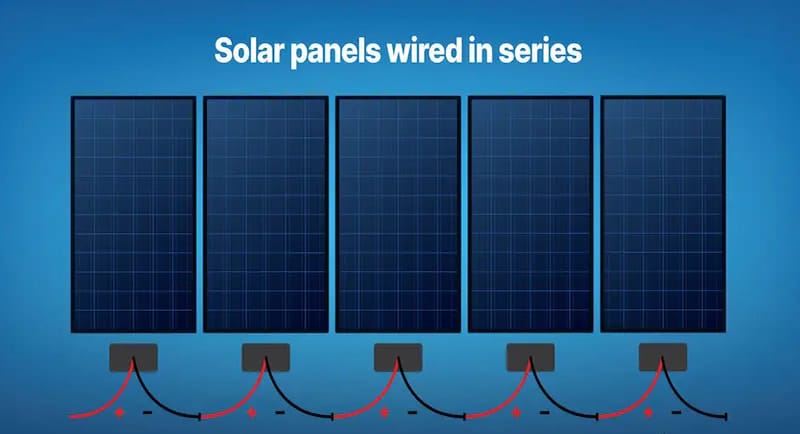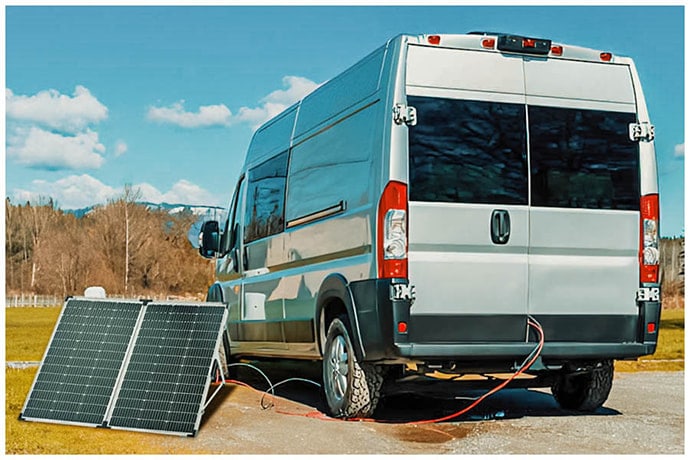Harnessing the power of solar energy has become a hallmark of sustainability-conscious individuals and communities. When setting up solar panel arrays, understanding the nuances of wiring configurations is crucial for optimizing energy generation. In this comprehensive guide, we explore the concept of wiring solar panels in series, elucidating the process, benefits, and key distinctions between series and parallel connections.
Demystifying Series Wiring of Solar Panels
Wiring solar panels in series involves connecting multiple panels in a sequential chain, where the positive terminal of one panel is linked to the negative terminal of the next. This arrangement forms a single circuit, effectively increasing the overall voltage of the array while maintaining a constant current.
The Step-by-Step Guide to Series Wiring
Determining Your Energy and Power Needs:
Before embarking on the series wiring journey, it’s essential to assess your energy requirements. Understand your daily power consumption and the capacity of your solar panels to determine the ideal number of panels needed to meet your needs.
Setting Up Your Panels:
Begin by positioning the solar panels in a suitable location with unobstructed access to sunlight. Ensure that they are oriented in the desired direction to maximize energy absorption.
The wire from Positive to Negative:
When wiring in series, the sequence matters. Connect the positive terminal of the first solar panel to the negative terminal of the second, and continue this pattern until all panels are linked together. This creates a single path for the current to flow through each panel.
Connect the Array to the Inverter:
To complete the series connection, connect the last panel’s positive terminal to the inverter’s positive input and the negative terminal to the inverter’s negative input. The inverter then converts the direct current (DC) generated by the panels into alternating current (AC) suitable for powering your appliances.

Series vs. Parallel Connection: Unveiling the Differences
While both series and parallel connections have their merits, they cater to different energy needs and system characteristics. Here are the key differences:
Voltage and Current:
Solar panels in series: Voltage increases, while current remains constant across the array.
Parallel: Voltage remains constant, while current increases with each added panel.
Efficiency:
Solar panels in series: Higher voltage is advantageous for long cable runs, but shading on one panel affects the entire array’s performance.
Parallel: Individual panel performance is not significantly impacted by shading or malfunctions in other panels.
Wiring Complexity:
Solar panels in series: Simplified wiring since all panels are interconnected along the same path.
Parallel: More intricate wiring due to separate wiring paths for each panel.
Inverter Requirements:
Solar panels in series: Requires an inverter with a higher voltage handling capacity.
Parallel: Requires an inverter with a higher current handling capacity.
Conclusion: Empowering Solar Energy Generation
Wiring solar panels in series presents a strategic approach to optimizing energy generation for specific scenarios. The increased voltage output can be beneficial for certain applications, especially when factoring in long cable distances. However, the susceptibility to shading and potential performance bottlenecks should also be considered.
As you embark on your solar journey, weigh the benefits of series wiring against your energy needs and environmental conditions. By understanding the nuances of series and parallel connections, you can tailor your solar panel array to best meet your power requirements while maximizing efficiency and minimizing potential obstacles.
Frequently Asked Questions
Can I mix different types of solar panels in series connection?
Mixing different panel types can result in varied performance, potentially diminishing the overall efficiency of the array. It’s advisable to use panels with similar specifications.
What happens if one solar panel in series connection malfunctions?
If one panel in a series connection malfunctions, it affects the entire array’s performance, leading to reduced energy output. It’s crucial to ensure proper maintenance and monitoring.
Can I convert a series-connected array into a parallel one?
Converting a series-connected array to a parallel configuration requires rewiring and potential adjustments to the inverter. Consulting a solar professional is recommended.
What safety precautions should I take when wiring solar panels in series?
Ensure that the panels are properly grounded and follow electrical safety protocols. It’s advisable to consult an electrician or solar professional for safe installation.
Is one wiring configuration universally better than the other?
The choice between series and parallel wiring depends on factors like energy needs, system design, and shading conditions. Each configuration has its own advantages and considerations.
Article from: Sungold
Learn more about solar energy advice at: https://www.sungoldsolar.com/


























